Here you’ll find locals drinking mezcal alongside tourists, cosy plazas abuzz with activity, and an incredible variety of food and smells from markets such as Mercado 20 de Noviembre.
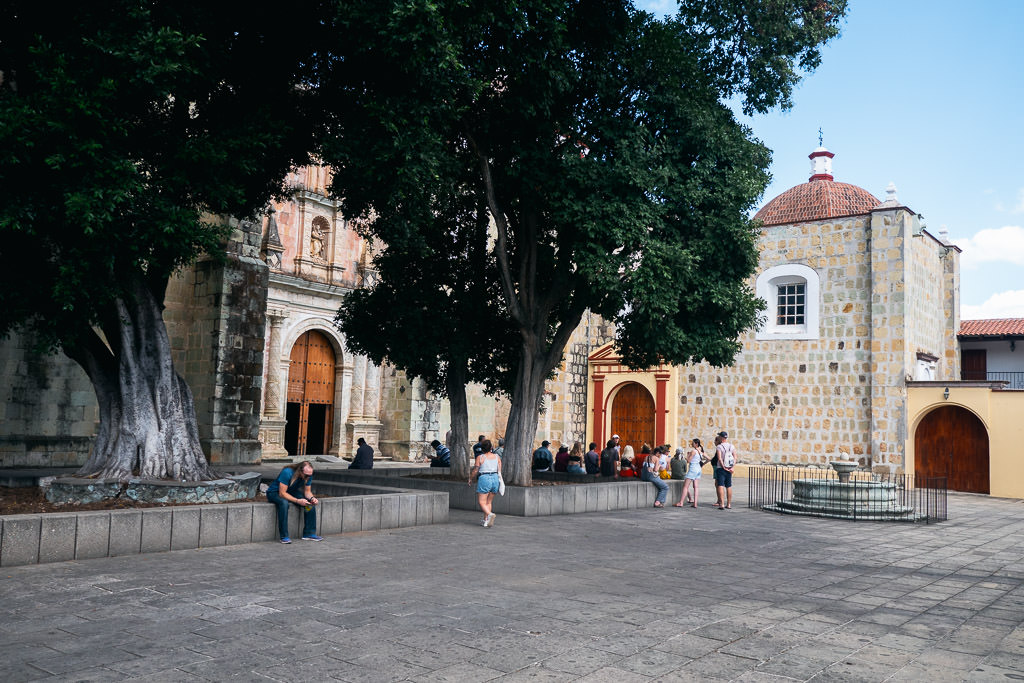
I’ve stayed twice in Oaxaca de Juarez, spending 2 weeks getting to know the city in detail, as well as visiting nearby villages, archeological sites, hiking routes, and more. In this comprehensive Oaxaca travel guide, I’ll share everything you need to know.
Oaxaca (pronounced: wah-hah-kah) has a great energy and much to experience, so I recommend staying at least 3 nights if you can.
Plan your trip to Oaxaca
Best tours in Oaxaca
Let me start with an important tip!
Few blogs seem willing to admit it, but the popular Hierve el Agua petrified waterfalls are highly overhyped and overtouristed.
It is constantly pushed as the ‘top thing to do’ in Oaxaca but it’s very tourist trappy, takes a long time to get to (up to 3 hours one way), and can often be so crowded as to be unenjoyable. I’ve heard complaints about bloggers and influencers misrepresenting this place, so I just want to give you my honest opinion.
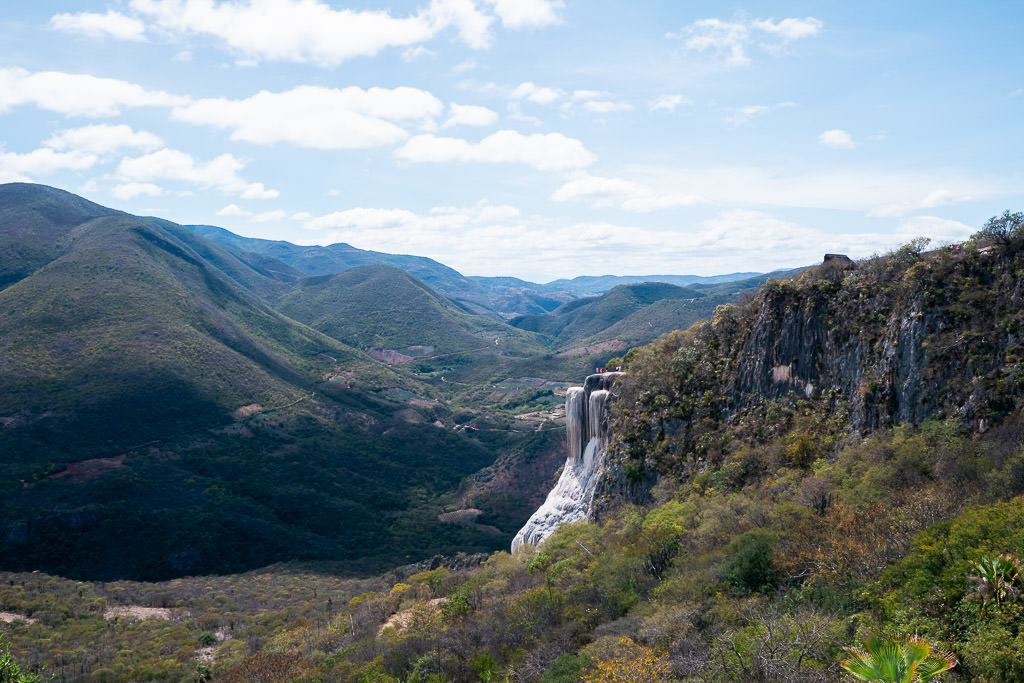
Instead, I think your time is better spent sightseeing within the historical city and closer to Oaxaca City.
Be aware that when searching for tours on sites like GetYourGuide or Viator, they often confuse Oaxaca State with Oaxaca City, so lots of tours get recommended that are in fact 10+ hours driving away.
These are the 3 guided activities I most recommend:
- Oaxaca is world-renowned for its cuisine, in particular thanks to its signature dish called mole, of which there are numerous varieties. You can seek these out on your own, though a night street food tour is another fun introduction to the local food scene (in a way that is safe for your belly!) as is taking a local cooking class.
- Don’t miss the ancient ruins of Monte Alban! This archeological site is highly impressive and only about a 20-minute drive from the center. You can find local tourist buses to take you there. However, you can also go on a half-day guided tour, which has the advantage of a local expert explaining all about the Zapotec culture and history.
- The nearby villages are known for various crafts including mezcal production and textile-making. It can be very interesting to check out the distilleries and workshops, such as with this tour.
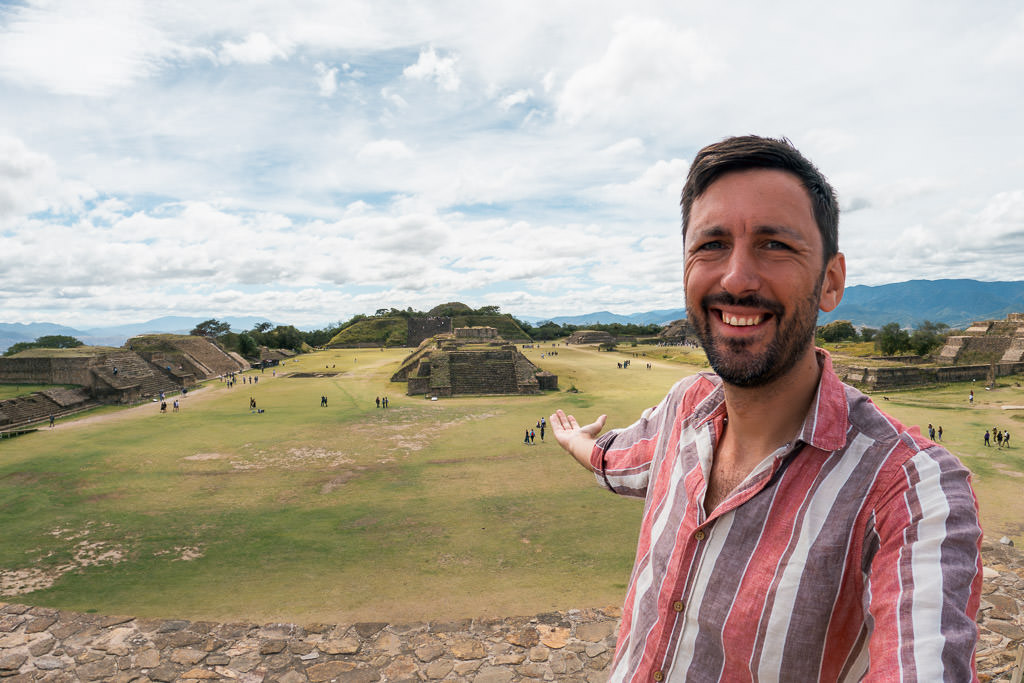
If you are staying for more than 3 nights, then I think a visit to Hierve el Agua can still be worth it, especially if it’s in combination with other sights.
Pick a tour that leaves early in the morning, such as this one that starts at 7AM (all others leave at 8-9AM or later). I know, it sucks to get up so early, but that way you’ll beat the crowds that begin arriving around noon.
There are also numerous things you can see in a self-guided way; for this, check out my top things to do in Oaxaca.
Essential things to know
The first thing you will notice is how remarkably well-preserved the historical center is. Oaxaca still adheres to its original 16th-century grid and most of the colorful buildings are low-rise (only one or two stories tall) and date from the colonial period.
Throughout its history, Oaxaca was able to hold onto its own identity to a great degree. Among the reasons are the mountainous terrain surrounding it, which was not as fertile or easy to cultivate, as well as the lack of major silver deposits — all this meant Oaxaca was left more to its own.
To this day, there is much less industry and sprawl in Oaxaca City, preserving its incredible charm.
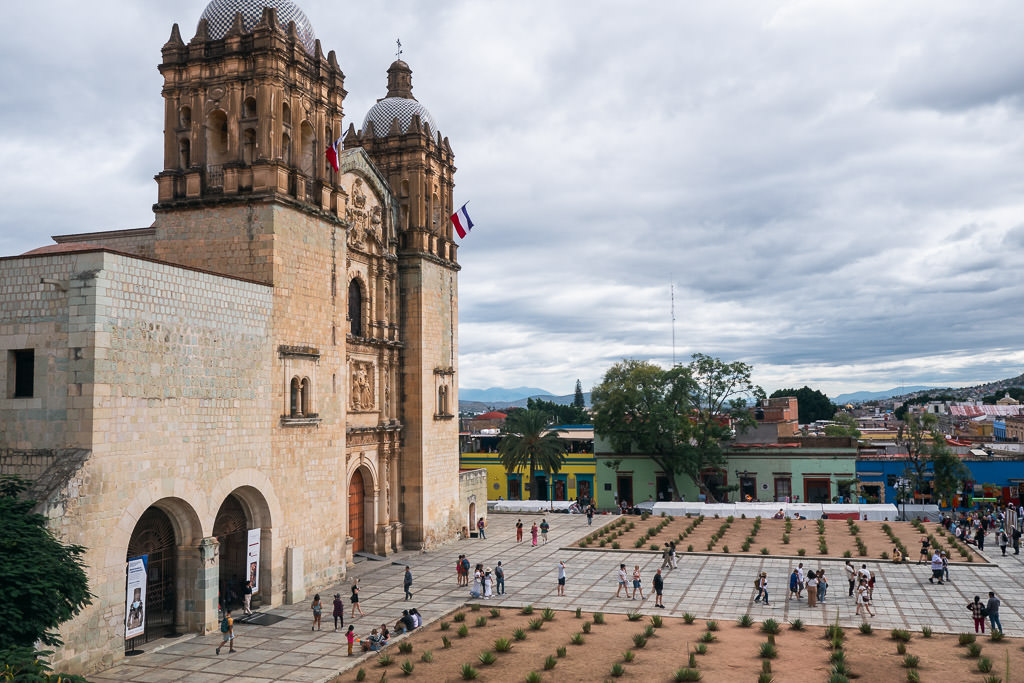
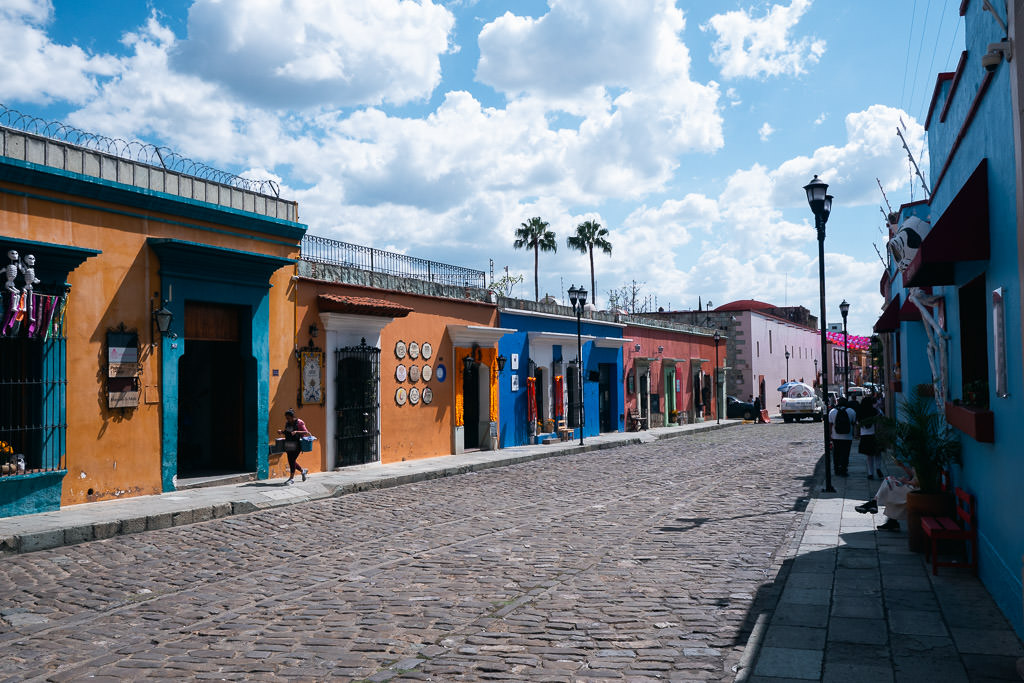
Even despite the Spanish conquest, indigenous languages and groups still flourish in Oaxaca, and it’s estimated that over 70% of all territories in this region are still predominantly indigenous. The city is rich in local indigenous crafts such as colorful textiles and various handicrafts.
The history of this region dates back several thousands of years to the times of the Zapotec and Mixtec cultures, who were thriving here long before other global powerhouses such as the Roman Empire had even existed.

Oaxaca’s food scene is also famous and regarded by many as the best in all of Mexico.
A lot is may be owed to its early roots, given this region was also the birthplace of corn (between 7000-10000 years ago!).
Today we’ll find a range of colorful and tasty dishes, such as the local favorites of Tlayudas, Memelas, and Enmoladas. You can find these in most food stands and markets around the city. But it’s often the famed dish, mole, that most excites foodies coming to Oaxaca. It involves a complex sauce that can have over a dozen different ingredients.
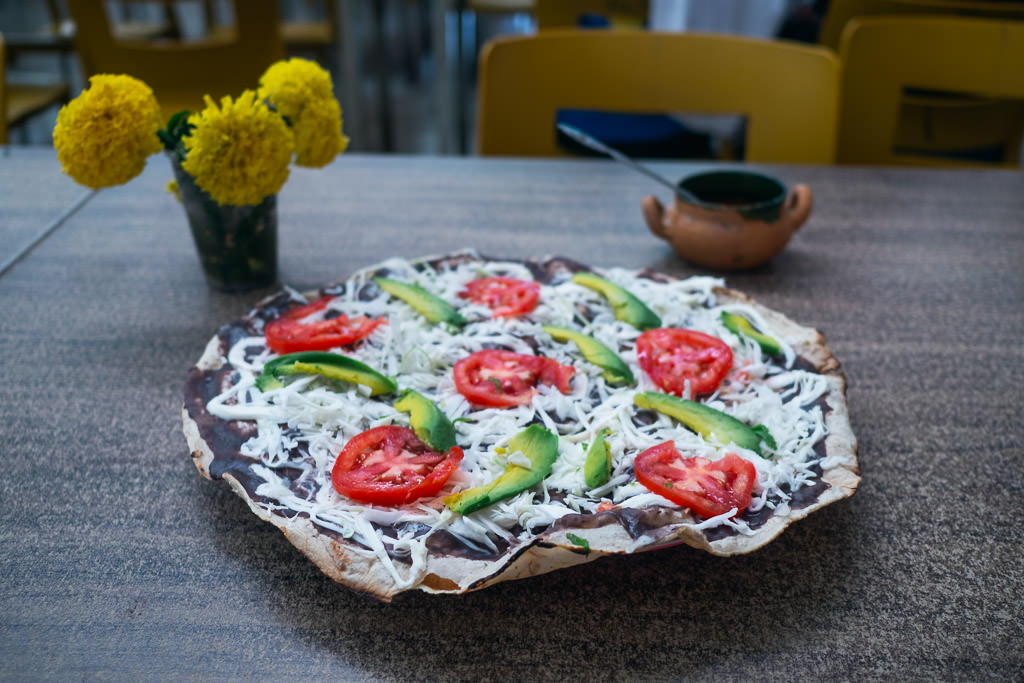
Despite being one of the more popular Mexican tourist destinations, Oaxaca City has plenty of authentic charm and a wonderful sense of tranquility.
The Zócalo (main square) is home to the iconic Cathedral of Oaxaca and nearby Templo de Santo Domingo de Guzmán, which are two lovely sites worth taking your time to wander around.
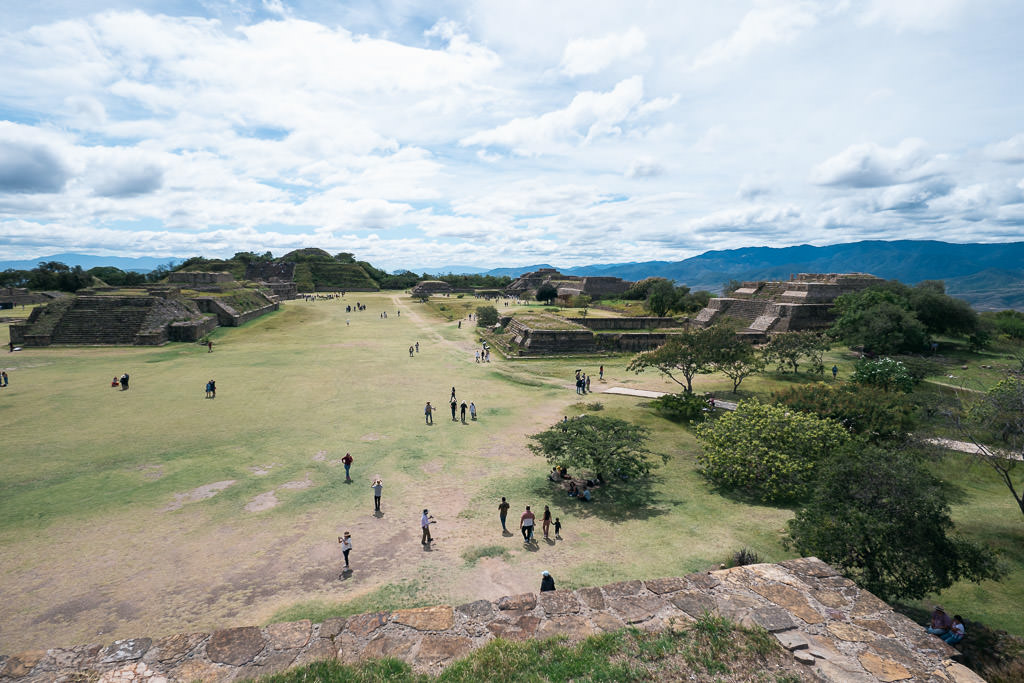
It’s also easy to reach the ruins of Monte Albán, which is a pre-Hispanic site that sits on top of a mountain and dominates the surrounding plains and Oaxacan highlands.
Besides its traditional character, Oaxaca also has a somewhat international vibe. Nowadays around 15,000 Canadians and Americans make Oaxaca their home, which has led to various international communities springing up, as well as a bilingual library and English-language activities and meetups.
Where to stay in Oaxaca
Best neighborhoods
Oaxaca City is among the safer cities that you can visit in Mexico, though the historic center is nevertheless the best and safest place for travelers to stay in. Stay anywhere in Centro and you’ll enjoy a great atmosphere while being within walking distance of all the sights.
Two adjacent neighborhoods with a fun local flavor are Jalatlaco and Xochimilco. You’ll find some quirky bars and colorful cafes here, but you’ll be slightly further away from the sights.
Suggested hotels in Centro
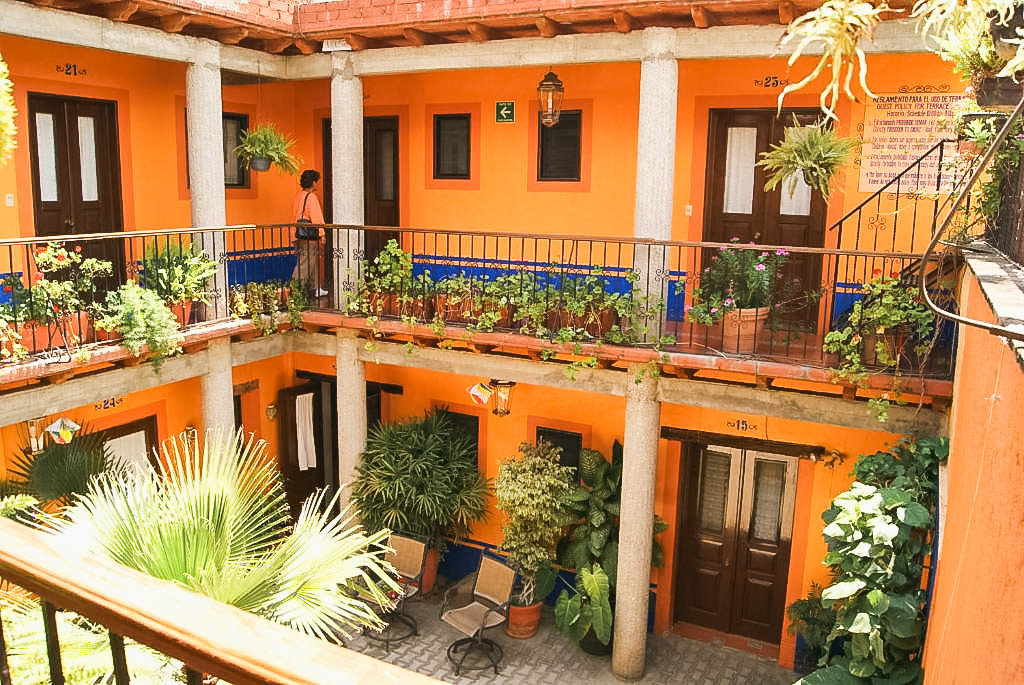
If you’re looking for a cosy and local vibe, then I recommend staying in a posada, a local type of hotel. The Hotel Posada del Centro has a wonderful courtyard with many plants and flowers and rooms with traditional Mexican decor.
I stayed here on my most recent visit to Oaxaca and it was great! It’s just a few minutes’ walk from the main square.
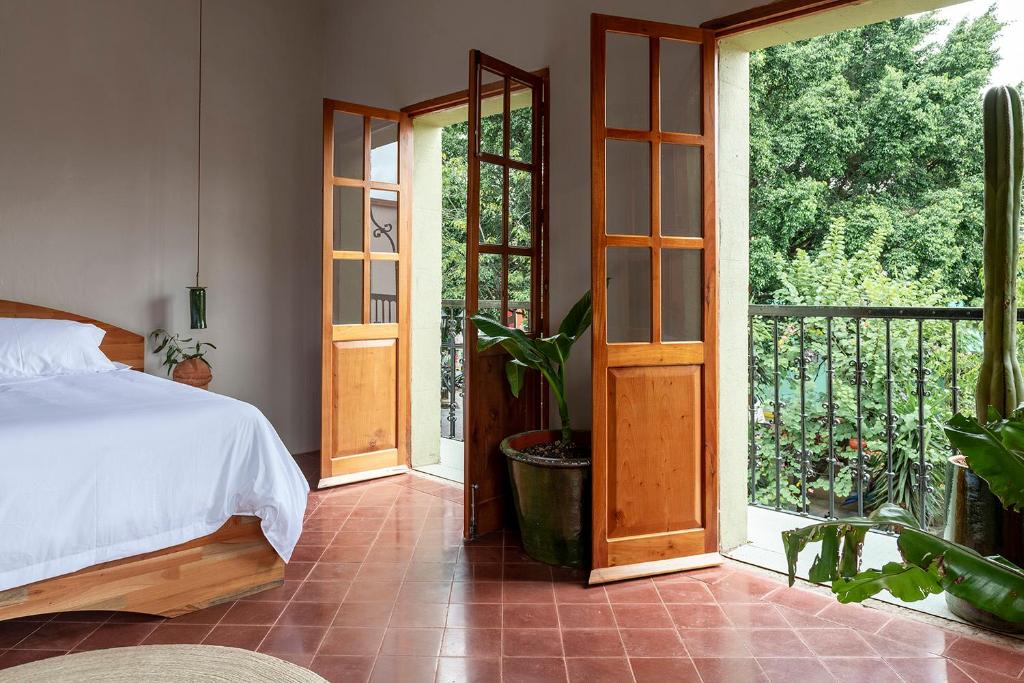
If you’re after something more deluxe and boutique, then take a look at Grana B&B. Established in an 18th-century heritage building, this tasteful hotel is just a few blocks from the main square and features stylish rooms, beautiful breakfast, and a rooftop with a view of the city.
The map below is centered exactly on Centro. Anywhere around this main square will be ideal!
Oaxaca Itineraries
Once you’ve decided on visiting Oaxaca City, it’s time to start planning how you’ll use your time here.
Below I’ve created various customized itineraries depending on your timeframe. Feel free to use these and mix them up according to your own needs and travel style.
For further inspiration, you can also check out our top 15 things to do in Oaxaca City.
Keep in mind that Oaxaca is a colorful and charming city, so just wandering the streets is already a top activity in itself.
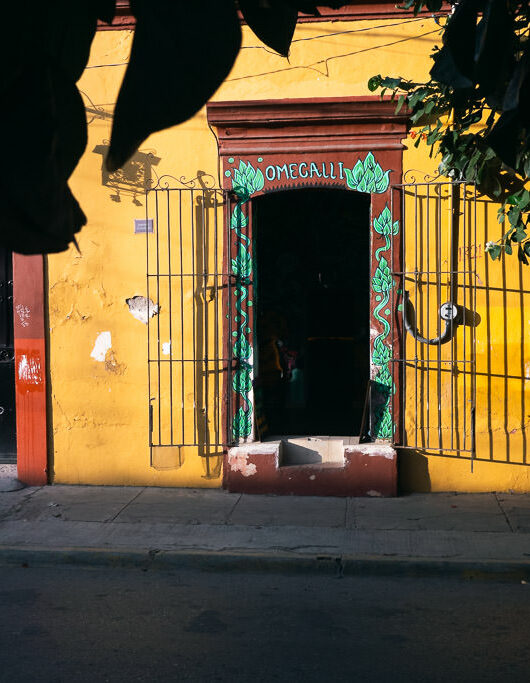
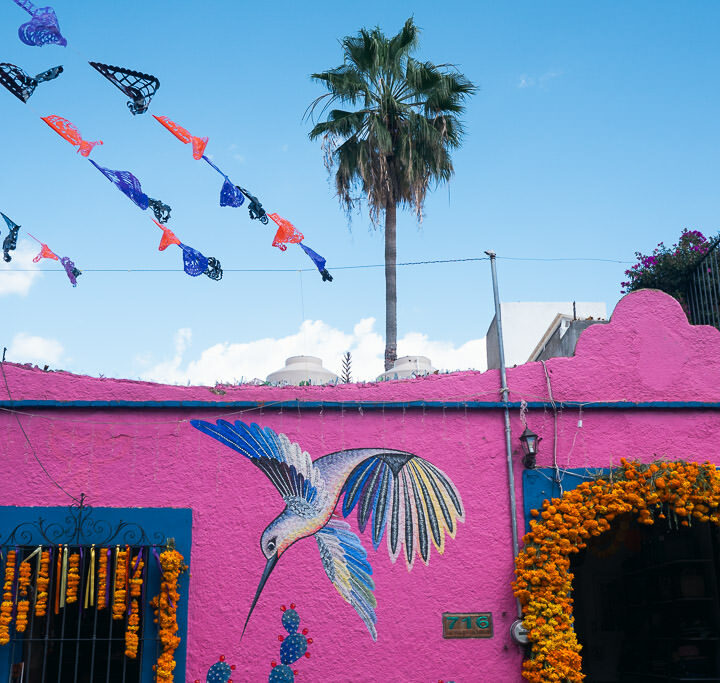
1 Day in Oaxaca
Spending just one day in Oaxaca City is not ideal, however, it’s still definitely possible to see some of the highlights if you’re motivated and organized. I include this information knowing some travellers (perhaps time-strapped Americans) may wish to plan a lightning visit, but you can also simply use this section to plan your first day in Oaxaca.
You’ll first want to spend the morning heading to the Zócalo in the Historic Center. This main plaza is known for its charming fountains, green spaces, and old colonial buildings.
Here we’ll also find the imposing Metropolitan Cathedral of Oaxaca, which is well-known for its giant twin towers and baroque facade.
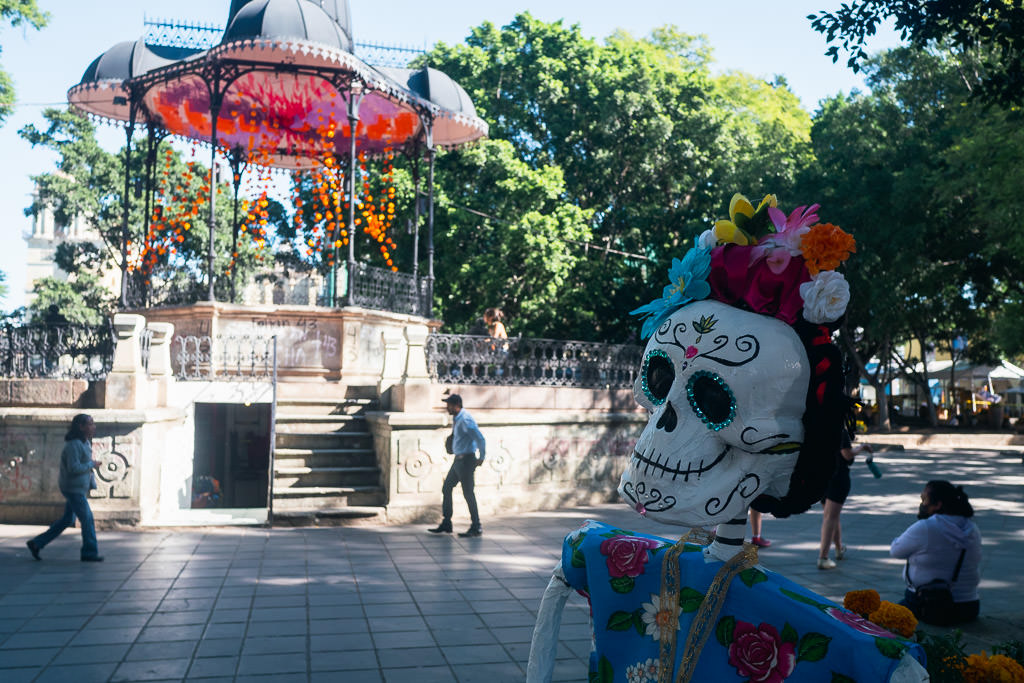
You can easily grab lunch at one of the restaurants that surround the plaza, or from the food stands nearby that serve up some tasty local dishes (I recommend grabbing a cool Nieve afterwards, which is like a creamy, iced popsicle often served with fresh fruits).
Afterwards, you’ll want to walk along the Andador Turístico (the actual street name is Calle Macedonio Alcalá), which is home to many craft markets, street art, and colorful settings that are perfect for a photo. It’s also a good place to pick up a traditional Oaxacan souvenir, such as handmade ceramics or a bottle of Mezcal.
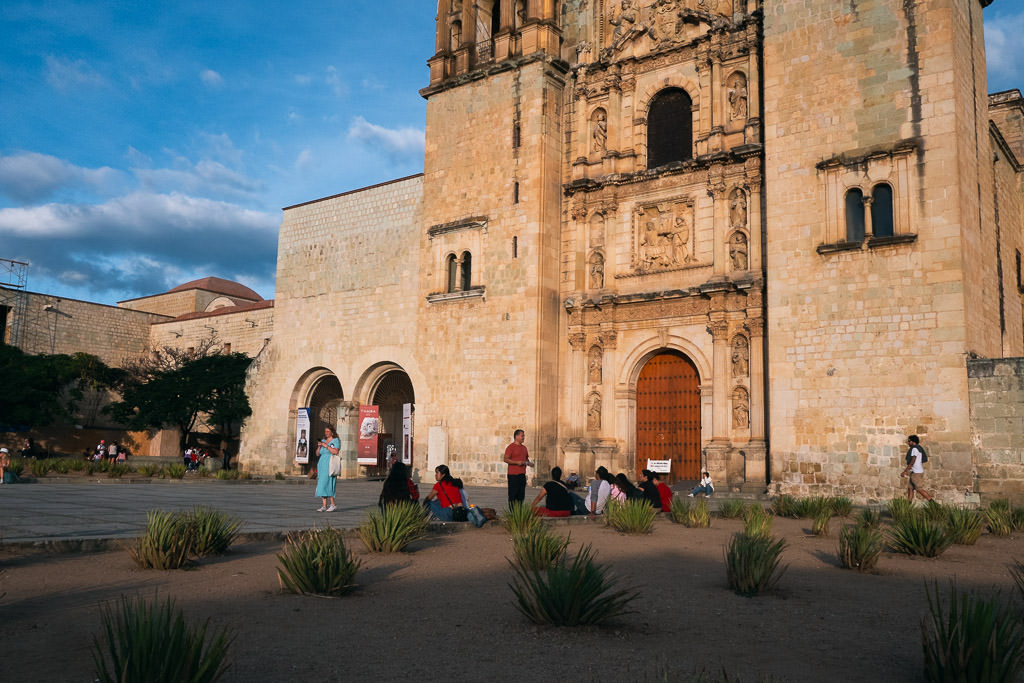
We’ll then finish up the historical tour by heading to the Templo de Santo Domingo de Guzmán.
Built in 1724, this gold-laden cathedral is one of the most striking in the entire country. Inside, you’ll find the Museum of Cultures of Oaxaca, which houses artefacts from the pre-Columbian times (mainly Zapotec) as well as from the Spanish occupation.
Go behind the back of the Templo de Santo Domingo and you’ll find the Ethnobotanical Gardens which show off the local plant life and has a very impressive cactus garden.
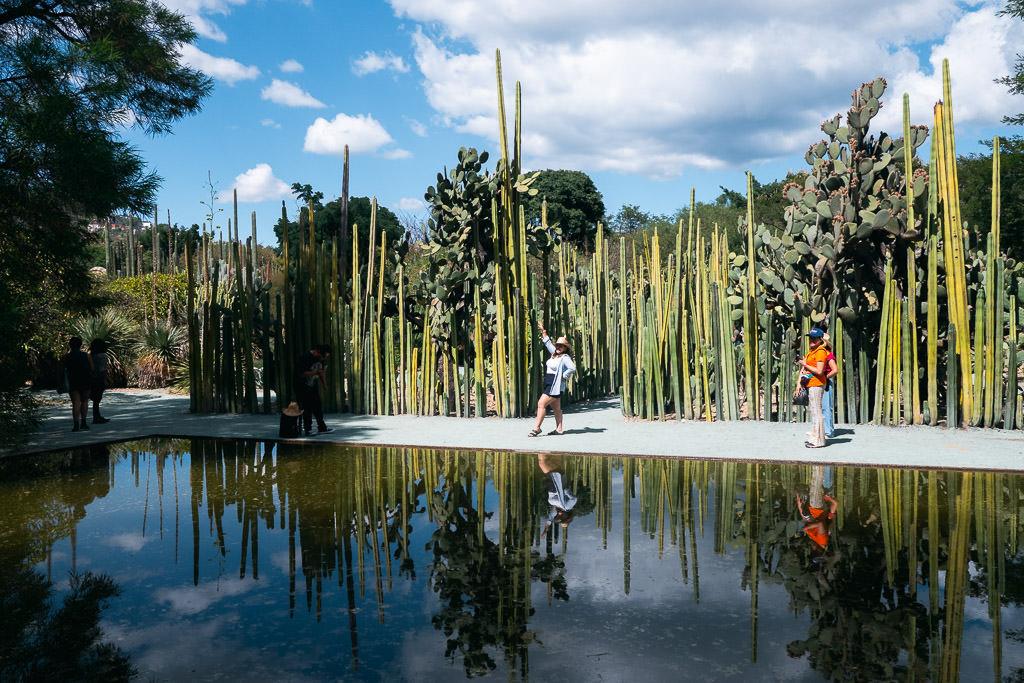
If you have any time left before heading on, try to fit in the Monte Albán Ruins. But you need at least about 3-4 hours to see this sight.
3 Days in Oaxaca
Three days tends to be enough to see all of the city highlights as well as a trip or two into the surrounding regions.
I recommend spending your first day exactly as outlined above, and at night heading to a Mezcal bar such as La Mezcalerita to get into the Oaxacan style of things.
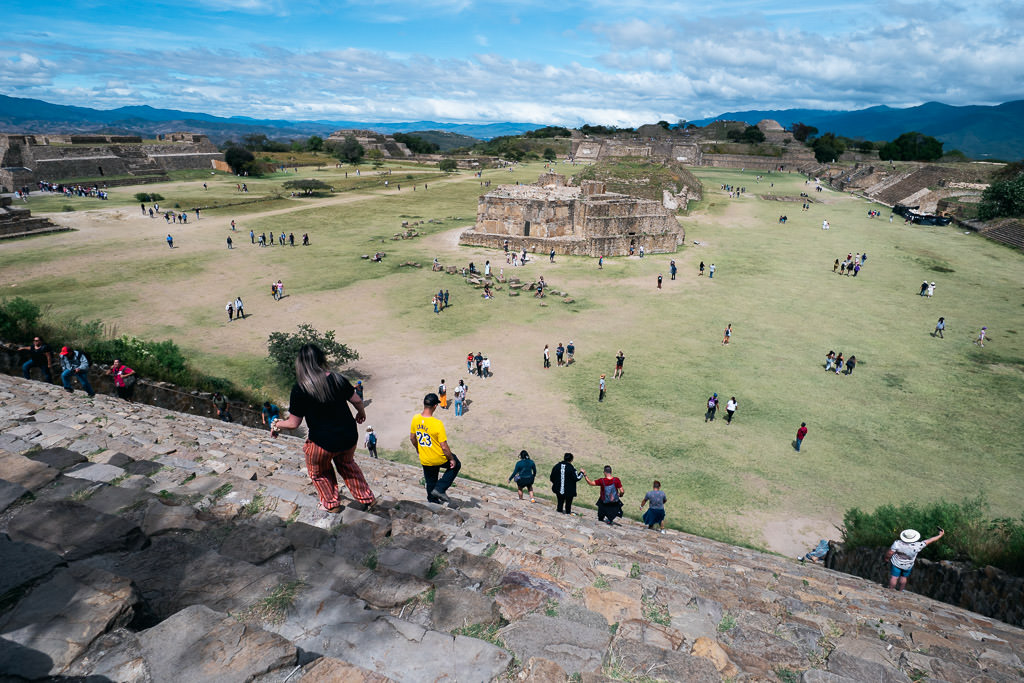
Waking up (somewhat) early on our second day, you can then head on a half-day tour to the Monte Albán Ruins, which are just an hour away.
Built in 500 BC, this site was the most important of the Zapotec civilization, and the second overall in all of Mexico (after Teotihuacán).
While you can visit independently, with a tour you’ll have all logistics sorted and a knowledgeable local guide on hand to tell you everything you need to know.
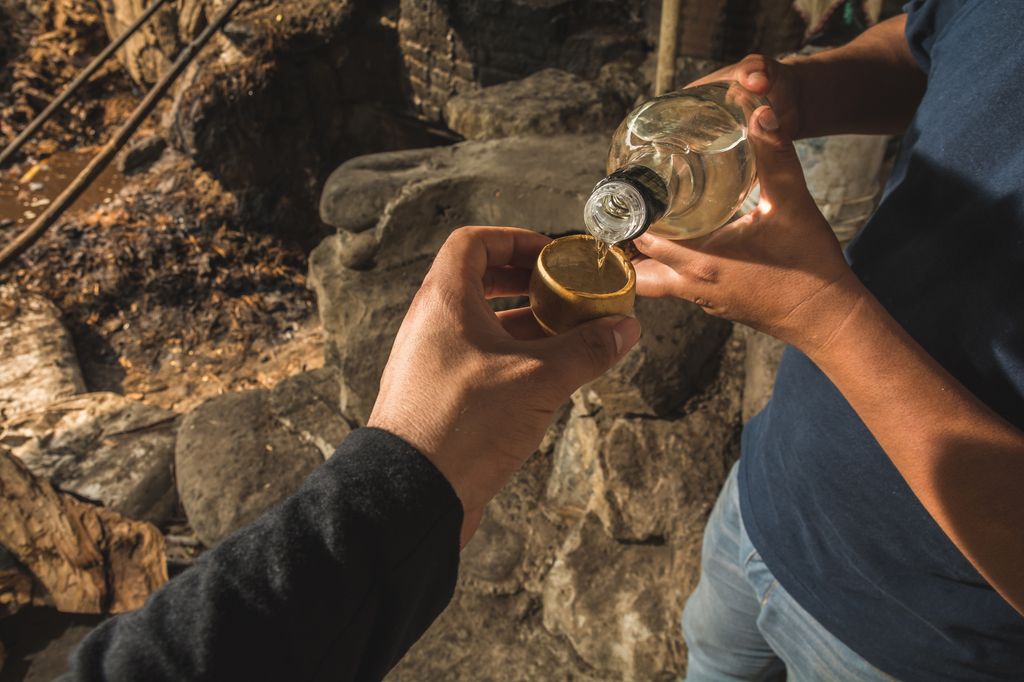
During your extended time in Oaxaca, you can also slow down a bit to take in the more relaxed pace of this city, as well as visit nearby towns.
The village of Mitla is one of the popular day trips, where you can buy traditional loom textiles as well as get boozy in a traditional Mezcal distillery.
5 Days in Oaxaca
For the Oaxaca completionist, I recommend 5 days. You will be less in a rush so you can wander around, enjoy activities such as walking tours and market visits, try every mole available, and check out all of the small museums. You’ll also have the opportunity to see more sights in the region.
You can take a trip to the Tree of Tule, in a village about 25 minutes east of Oaxaca, which is famed for being the stoutest (widest) tree in the world. It’s definitely an awe-inspiring ancient organism that’s been around since the Aztecs!
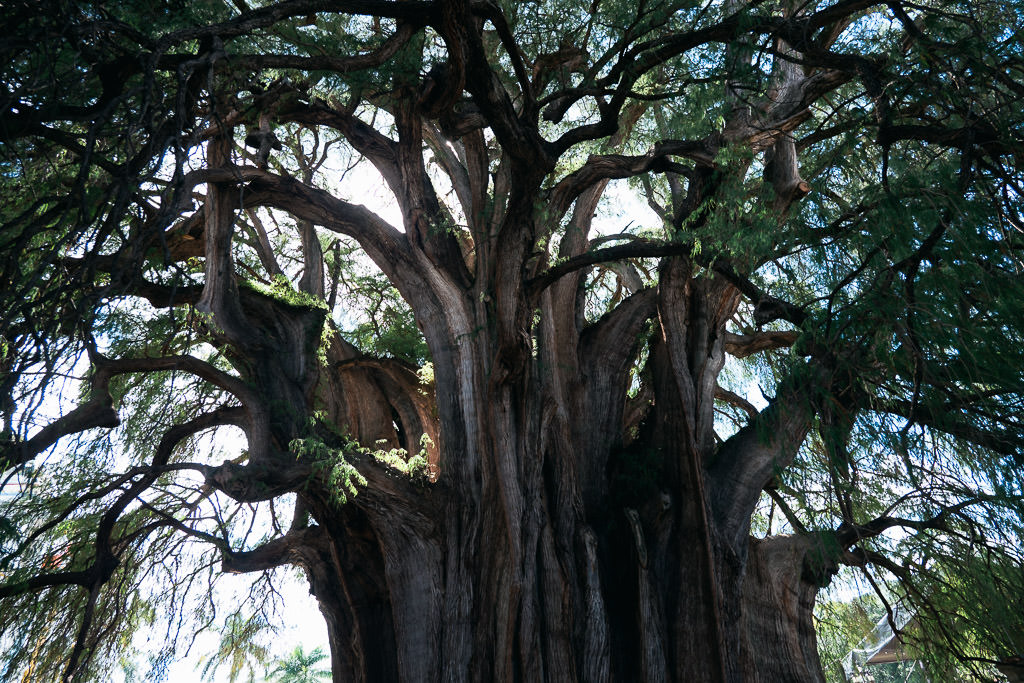
If you’re here on a Sunday, it’s highly worth visiting the Sunday market in Tlacolula, which is about 40 minutes east of Oaxaca. This is one of the most colorful markets you can visit, with many indigenous people coming down from mountain towns to do their weekly shopping, and food stalls in large halls serving a kind of BBQ.
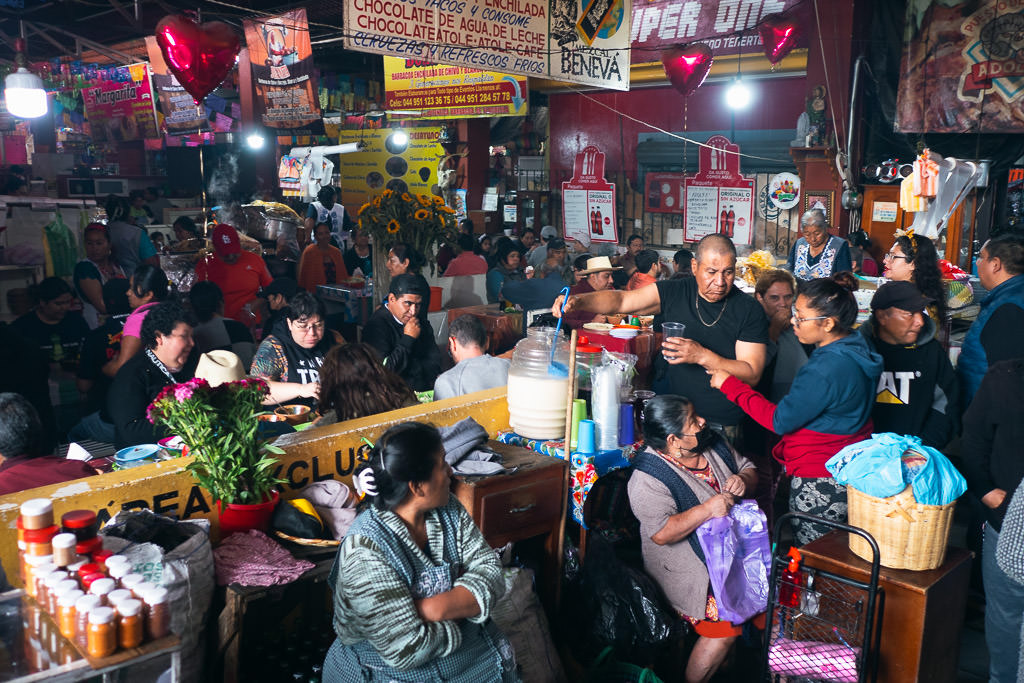
The most famous site is Hierve el Agua, which is a petrified waterfall formed from its heavy composite of carbonated water and rich minerals.
If you’re in Oaxaca for longer, I think it becomes worth it, as the journey to- and from there will be taking up less of your time in relative terms. Consider an early morning trip to Hierve el Agua to beat the crowds.
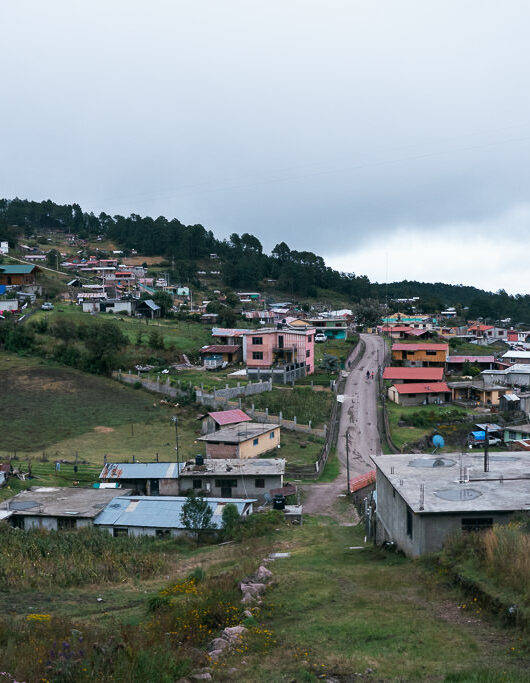
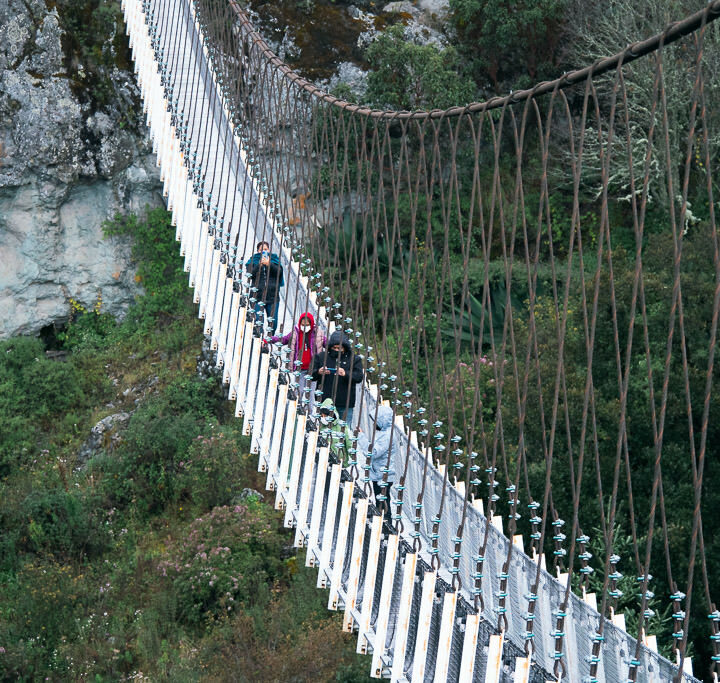
Finally, if you love off-the-beaten-path towns and lesser touristy sites, then you’ll also want to head to the Pueblos Mancomunicados.
These villages in the mountains north and northeast of Oaxaca have banded together to allow for ecotourism to take place in their region. They’ve created hiking trails as well as suspension footbridges and ziplines that offer breathtaking views over the mountain-nestled towns.
When to Visit Oaxaca
November to April is the dry season and the overall most popular time to explore Oaxaca.
Due to its average elevation of 1,555 m (5,102 ft), Oaxaca’s climate is milder than the low-laying parts of Mexico. Mornings can be a bit chilly, with hot afternoons.
Daily average temperatures are warm, ranging between 63-72°F (around 20°C). Highs can reach up to 87°F or 30°C, especially in April, which is the hottest month of the year.
Early May to October is the wet season. As you can imagine, rainfall is heavy during this time and can vary between 3-6.5 inches each month.
Although the showers can interrupt outdoor exploring, the wet season is great for getting travel deals on flights and accommodation since it’s a less touristy time to visit.
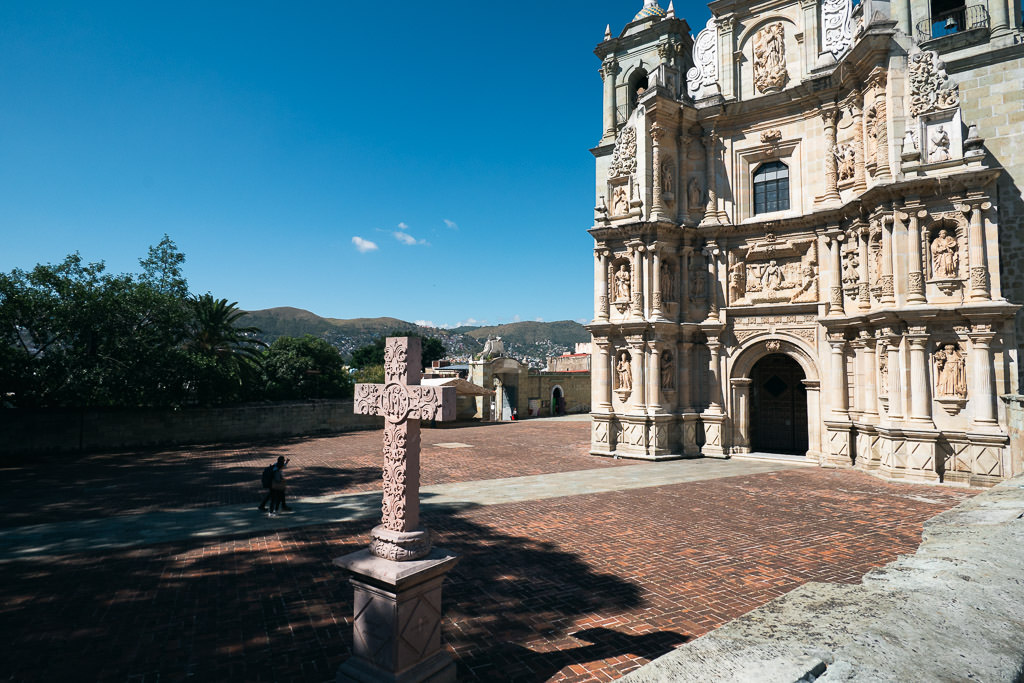
Day of the Dead tips
Travel guides often tout Oaxaca as the best place to witness the Day of the Dead festivities. This has now increased demand to such a level that you have to be very early to book your accommodation!
I thought 4 months in advance would still be early to book but I found that 95%+ of accommodation had already been claimed. To secure your preferred type of hotel (or even hostel), I recommend booking many months ahead of time — consider 6 months to be sure.
No matter when you book, room rates will be much higher than the normal price, so be prepared to empty your wallet if you want to be in Oaxaca during this special time.
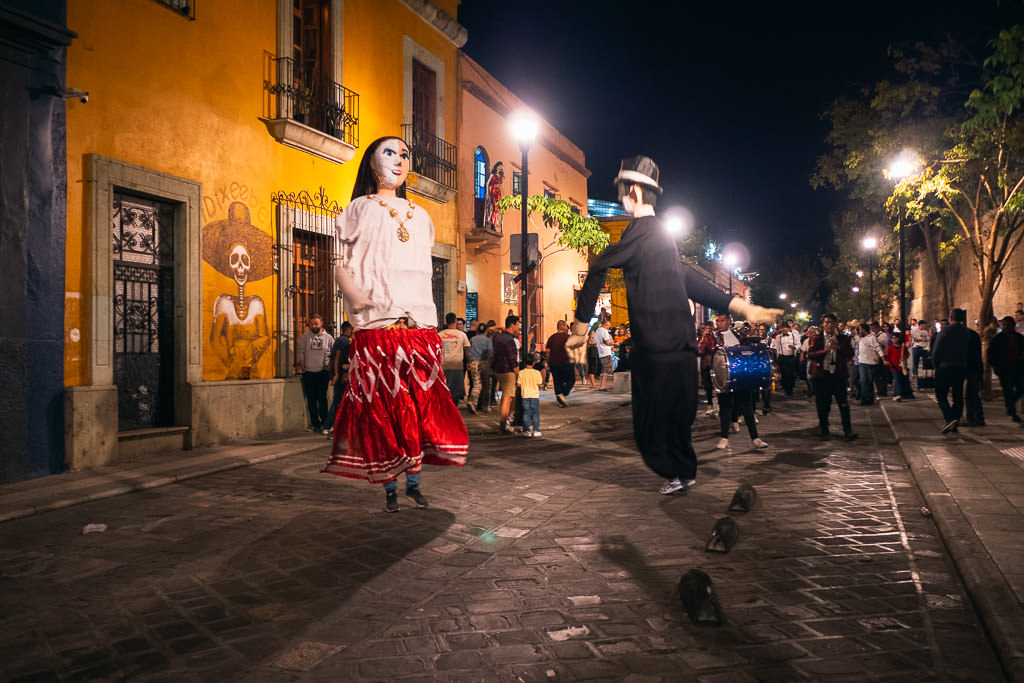
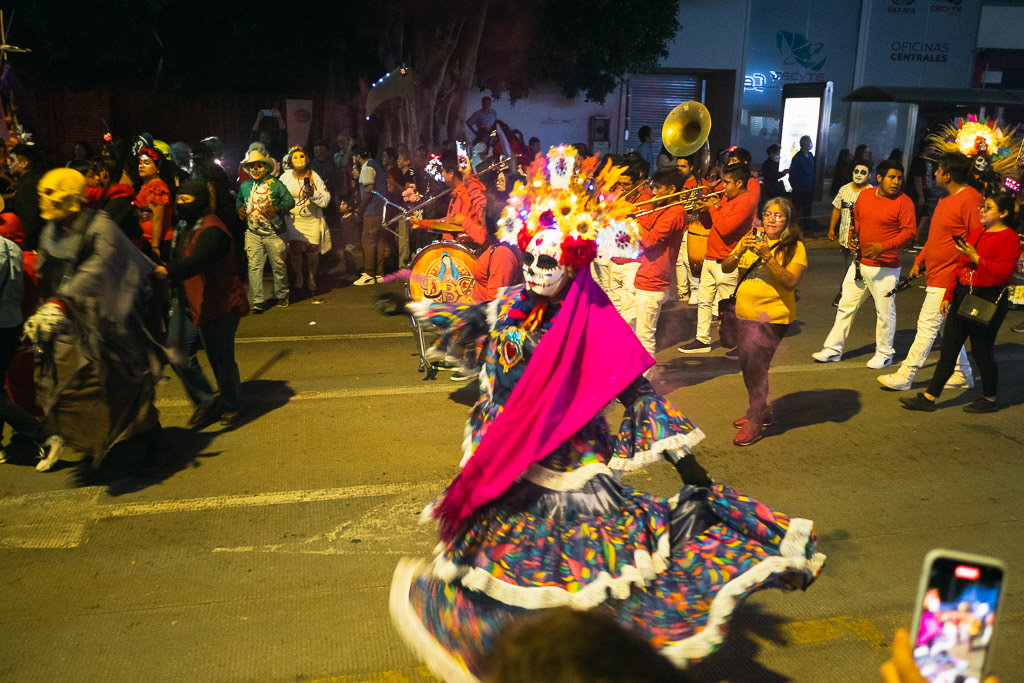
By the way, not everything centers around October 31! The celebrations are spread over many days. Although in English we say ‘day’ of the dead, it’s really closer to a whole week. This does help to limit your fear of missing out when you’re in Oaxaca for the festivities, as there isn’t just “one” parade you could miss.
Being in Oaxaca as a guest, be sure to respect the graveyards and leave locals to do their thing there in peace. The graveyards all have different opening times which are shown on banners at the entrances.
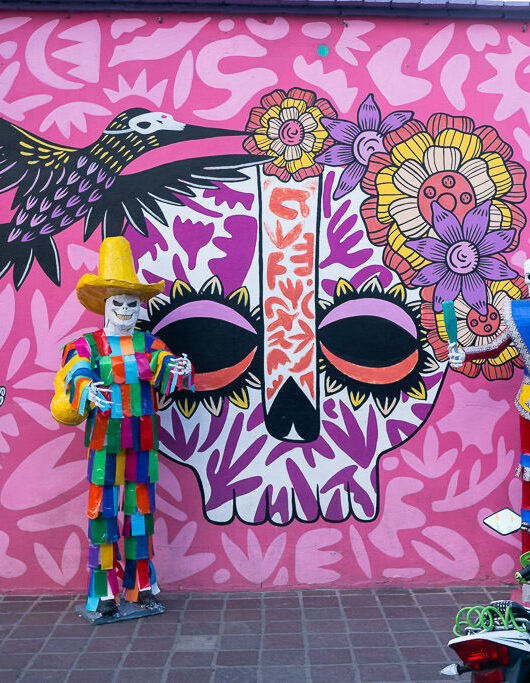
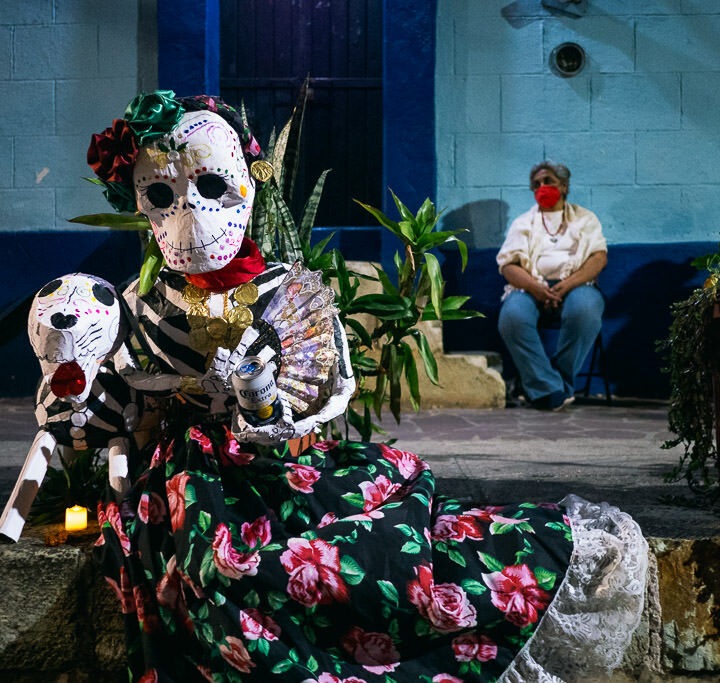
The city is definitely filled with festive energy and you can see the colorful decorations everywhere, so it’s an exciting time to visit Oaxaca.
That said, Day of the Dead celebrations can be witnessed all over Mexico. If you’re too late to book in Oaxaca, don’t despair! You can consider many other places, some of which offer a more intimate experience. Nowadays, Mexico City also has a huge Day of the Dead parade, and this metropolis is much less likely to run out of accommodation.
How to get to Oaxaca
Arriving Internationally
If Oaxaca is your first stop in Mexico, then you have a few options.
There is a small airport which does welcome some international flights directly, such as from the USA (Dallas and Los Angeles), with a one-way ticket costing between $250-350.
Guatemala is the other, which is best for travelers who are in Central America (roughly $150 for a one-way).
Otherwise, you’ll probably arrive by bus from Mexico City, which has far more international flight connections.
Arriving Domestically
From Mexico City: A coach bus from Mexico City to Oaxaca will take about 7 hours and cost around USD $40. The first-class busses such as those from the companies ADO or AU are very comfortable.
From San Cristóbal de las Casas: This route can take anywhere from 12-15 hours (always go for the night bus on this leg) and costs roughly $50.
From the Oaxacan coast: there are coach buses as well as direct shuttle minibuses from Puerto Escondido and the Mazunte/Puerto Angel/Huatalco area. In 2024 the journey time is being shortened considerably with the opening of a new road; whereas the trip from Puerto Escondido once took 10 hours, it will now take about 2,5 hours.
You can also fly directly into Oaxaca City from various airports all over the country.
The most popular airports to fly from include Mexico City, Cancún, Monterrey, and Guadalajara. A one-way will cost you between $35-55 (without baggage).
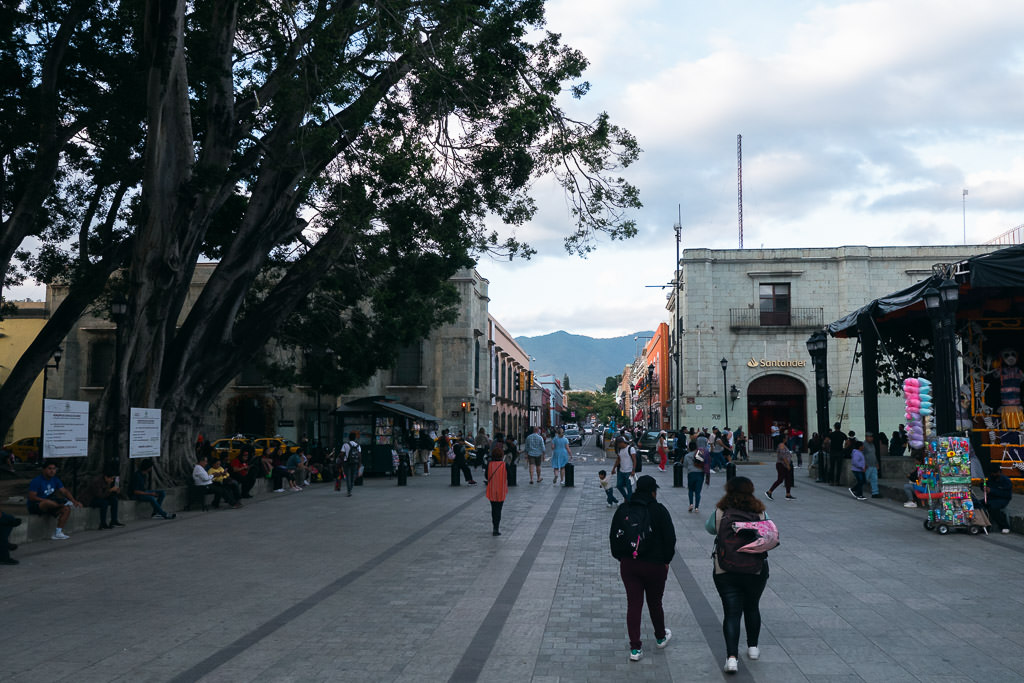
Oaxaca Travel Tips
Is it safe to explore Oaxaca?
While other Mexican cities can be hit or miss when it comes to crime, Oaxaca City is mostly safe to walk around, even if you’re travelling alone.
You can visit attractions independently without having to be overly anxious, although tours are still a good idea (given you’ll learn much more with a guide).
Your biggest concern will be when exploring inside the markets, as petty theft has been reported. Always keep your phone and wallet in your front pockets, and leave all flashy accessories and valuables back in your accommodation.
Whilst Oaxaca is one of the safest states in Mexico, there’s still a risk of petty theft occurring. This is most likely at night or within the busy markets, where you’re less aware of everything happening around you.
If you’re planning on a heavy night of Mezcal, just make sure to write down where you’re staying so you can get back in one piece!
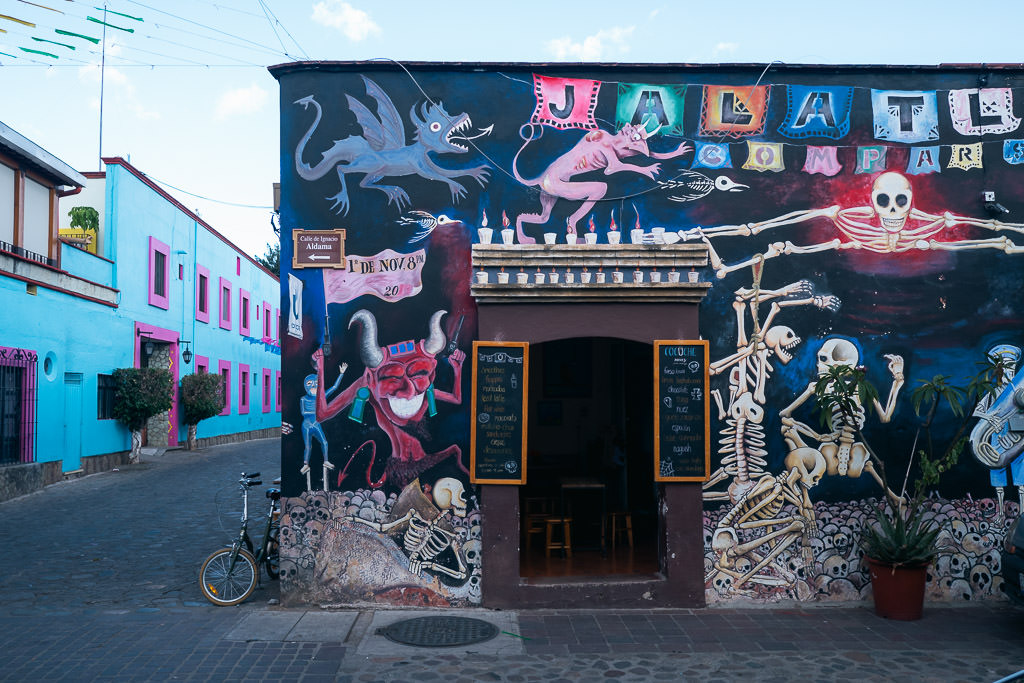
Climate and what to pack
One of the most important things to remember when heading to Oaxaca City is to bring a wide range of clothes.
Given Mexico is usually perceived to be hot everywhere, many travelers are often caught out shivering when the sun goes down in these highland areas.
Usually, a jumper is enough, although you may want to bring a light coat if heading in winter (or a poncho if visiting in the wet summer months).
During the day you’ll want to wear shorts, light garments and lather up with sunscreen, and especially when heading into the mountains to destinations like Monte Albán and Hierve el Agua.
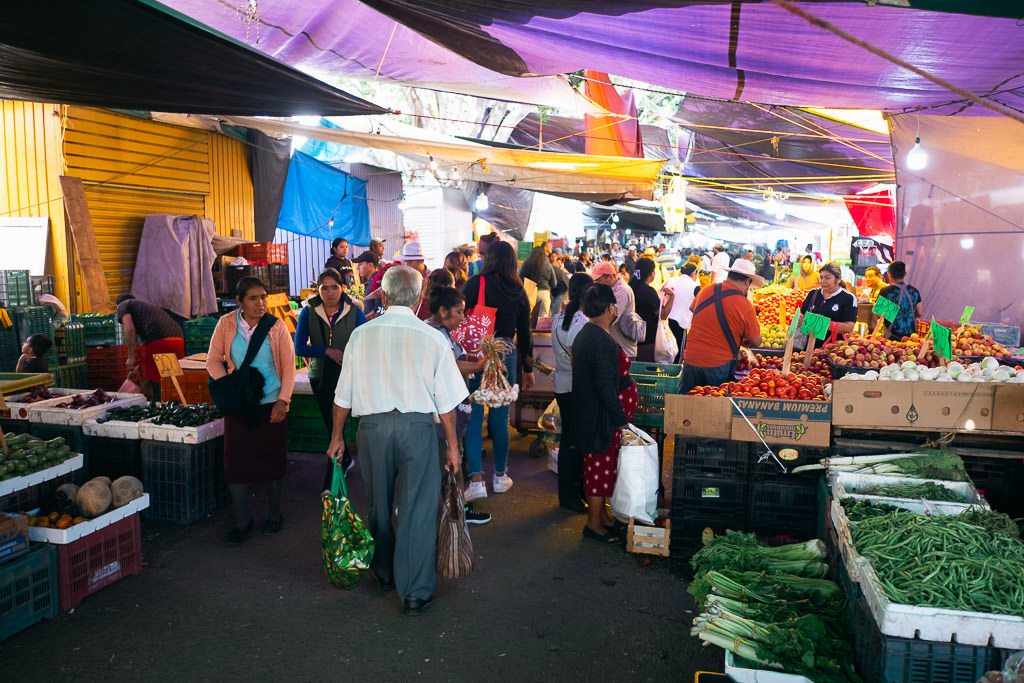
When to visit
Something else I highly recommend travelers do is to plan their trip to Oaxaca City around the major holidays.
Whilst prices will be a little more expensive, you’ll get to see some truly memorable cultural events.
Día de los Muertos (early November) is one of these, where the rowdy parades, colorful arrangements, and offerings for past loved ones will be really eye-opening.
Other great events to witness include Semana Santa (late March-early April) and the Guelaguetza (late July).
Some links may be affiliate links, meaning I may earn commission from products or services I recommend. For more, see site policies.
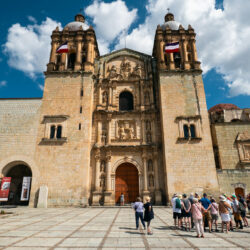





0 comments
Leave a comment
Your email address will not be published. Comments are manually moderated.